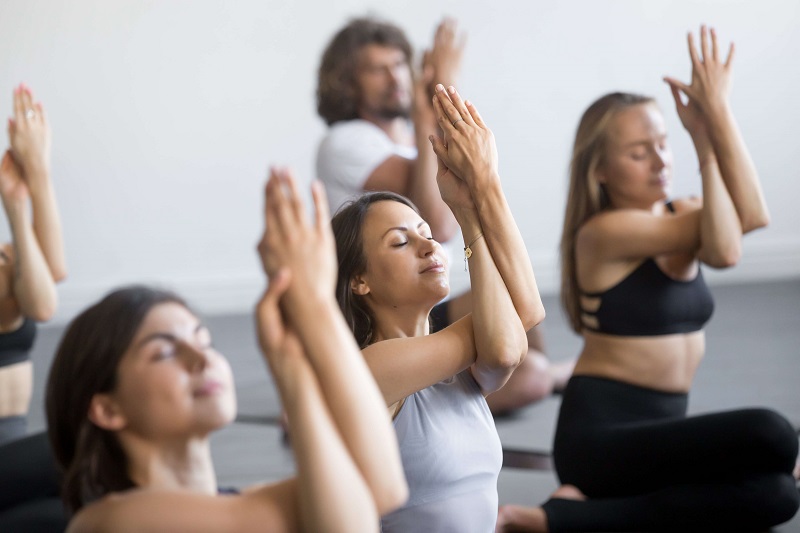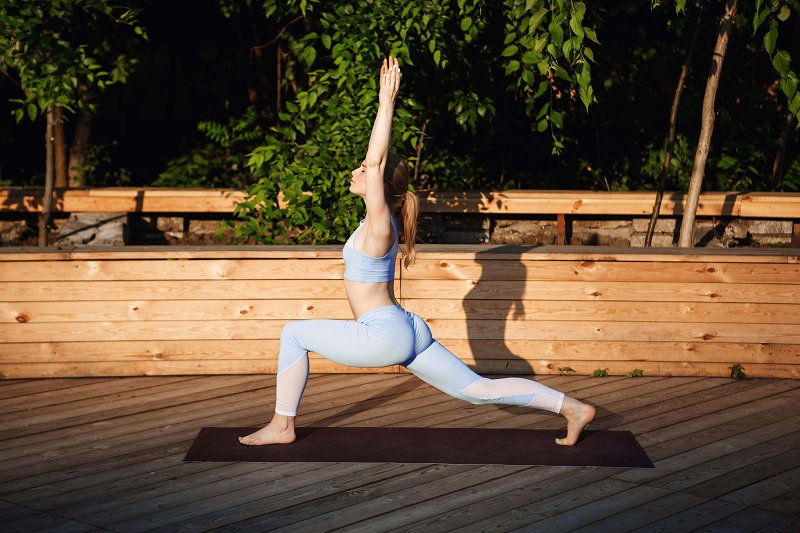The Best Meditation Techniques for Women to Reduce Stress and Anxiety

Managing stress and anxiety is crucial to maintaining a healthy and balanced life. One effective method for stress reduction and mental well-being is meditation. As more women seek holistic approaches to managing their anxiety, it offers a promising and accessible solution. This article will explore various meditation techniques specifically tailored for women, aiming to provide guidance in finding the best practice for you to reduce stress.
Understanding the Basics of Meditation
Meditations calming and balancing effects have made it popular in many faiths and cultures for ages. Since mental stress can have physical manifestations like tension and headaches or even more severe health conditions, the mind-body link is crucial in stress management. Meditation techniques often focus on developing a deeper understanding of this connection, enabling practitioners to recognize the physical signs of stress and consciously work to alleviate them. Before delving into specific relaxation techniques, it is essential to have a solid understanding of the basics of meditation. This includes its definition, purpose, the role of the mind-body connection in stress relief, and understanding of the different meditation types available.
Breath-focused Meditation Techniques
Popular among breath-focused meditation practices, mindfulness instructs practitioners to pay attention to their inhalations and exhalations while also keeping an open awareness of their thoughts, feelings, and body sensations. This form of meditation encourages a peaceful disposition by helping one adopt an open and accepting view of life’s events. To practice mindfulness meditation, follow these steps:
- Find a comfortable and quiet space where you can sit or lie down without distractions;
- Calm your body and mind by closing your eyes and taking a few deep breaths;
- Focus on the sensation of breathing in and out via your nostrils or the rising and falling of your chest;
- Whenever your mind wanders, gently bring your focus back to your breath without judgment;
- Keep at it for at least 5-10 minutes, and as you get the hang of it, work up to longer sessions.
Deep breathing exercises are another technique that can help reduce stress and anxiety. By consciously controlling the breath, you can activate the body’s relaxation response and lower stress levels. Here are the steps to practice deep breathing exercises:
- Sit or lie down in a comfortable meditation pose, ensuring your back is straight and your body is relaxed;
- Inhale through your nose, allowing your abdomen to rise while keeping your chest still;
- Exhale through your mouth, allowing your abdomen to fall while keeping your chest still;
- Continue this practice for several minutes, focusing on the sensation of your breath and the movement of your abdomen.
Visualization and Guided Imagery Techniques
Visualization is a powerful technique that involves using the mind to create mental images of calming and peaceful scenes or situations. Guided imagery is a form of visualization that involves listening to a recorded script or a guide, leading the listener through a series of calming and peaceful images. This technique can be particularly helpful for those who struggle with maintaining focus during meditation. Guided imagery resources can be found online, in smartphone apps, or even in local meditation classes. To practice visualization techniques, follow these steps:
- Find a comfortable and quiet space where you can sit or lie down without distractions;
- Relax your body and mind;
- Imagine a peaceful scene or situation, such as a beautiful beach, a serene forest, or even a cherished memory;
- Engage all your senses in this mental image, noticing the sounds, smells, and tactile sensations associated with the scene;
- Allow yourself to become fully immersed in this peaceful environment.
Loving-kindness (Metta) Meditation
Loving-kindness meditation, also known as Metta meditation, is a traditional Buddhist practice aimed at fostering unconditional love, compassion, and goodwill towards oneself and others. This powerful technique helps develop positive emotions, enhance relationships, and promote overall well-being. The numerous benefits of loving-kindness meditation are supported by scientific research. These benefits include:
- Increased positive emotions and decreased negative emotions;
- Improved emotional intelligence and empathy;
- Enhanced feelings of social connection and reduced feelings of loneliness;
- Lowered stress levels and reduced symptoms of anxiety and depression;
- Improved emotional regulation, making it easier to manage and recover from difficult emotions and experiences;
- Enhanced interpersonal relationships by developing empathy, understanding, and compassion toward others.
Steps to Practice Loving-kindness Meditation
Metta meditation is simple and can be done anywhere, anytime. The following basic steps will guide you through the process:
- Find a comfortable meditation pose: Make sure your spine is straight but relaxed. Close your eyes and take a few deep breaths to center yourself;
- Start with yourself: Begin by focusing on yourself and silently reciting phrases that express love, compassion, and goodwill, such as, “May I be happy, may I be healthy, may I be safe, and may I be at ease.”;
- Expand your focus: Gradually expand your focus to include others, starting with loved ones and friends, then acquaintances, and finally, strangers or even those with whom you have conflicts. For each person or group, silently recite the loving-kindness phrases, envisioning them as happy, healthy, safe, and at ease;
- Practice forgiveness: As you continue to expand your focus, be mindful of any negative feelings or resentment that may arise. Gently acknowledge these feelings and practice forgiveness, both for yourself and for others;
- Conclude the meditation: After you have extended loving-kindness to yourself and others, take a few moments to notice how your body and mind feel. Gently bring your awareness back to your breath and, when you feel ready, slowly open your eyes.
Yoga and Meditation
The practices of yoga and meditation are deeply interconnected, both originating from ancient spiritual traditions and sharing a common goal of promoting overall well-being, balance, and inner peace. Combining these two powerful practices can offer a holistic approach to stress relief, addressing both the physical and mental aspects of stress and anxiety.
Yoga is a physical practice that involves various postures (asanas), breath control (pranayama), and concentration techniques to promote flexibility, strength, and mental focus. By releasing physical tension and promoting relaxation, yoga can create the optimal conditions for successful meditation practice. Despite their differences, both practices share a common goal of cultivating inner peace and equilibrium.
Some Benefits of Combining These Practices
- Enhanced relaxation: Yoga postures can help release physical tension, while meditation techniques promote mental relaxation, leading to a deeper sense of calm and tranquility;
- Improved focus and concentration: Both yoga and meditation require mental focus and concentration, which can improve overall cognitive function and help manage stress more effectively;
- Increased self-awareness: These practices encourage a deeper connection with oneself, fostering greater self-awareness and emotional regulation;
- Balanced energy levels: Yoga can help stimulate and balance the body’s energy, while meditation can promote mental clarity and rejuvenation, leading to a more balanced state of being.
Recommended Yoga Poses for Stress Reduction
Incorporating specific yoga poses into your routine can help target anxiety, releasing tension from the body and promoting a sense of relaxation. Some recommended poses for stress and anxiety reduction include:
- Child’s Pose (Balasana): This gentle pose stretches the back and hips, helping to release tension and promote relaxation;
- Cat-Cow Pose (Marjaryasana-Bitilasana): This dynamic pose involves moving the spine through flexion and extension, helping to relieve tension in the neck, shoulders, and back;
- Legs-Up-The-Wall Pose (Viparita Karani): This restorative pose involves lying on the back with the legs extended up a wall, promoting relaxation and reducing stress by allowing gravity to aid in the circulation of blood and lymphatic fluid;
- Corpse Pose (Savasana): It involves lying flat on the back with the arms and legs extended, allowing the body to fully relax and release tension.
Finding the Right Meditation Technique for You
Trying various techniques will allow you to experience their unique benefits and approaches firsthand, helping you determine which resonates most with you and provide the most significant stress-reducing benefits. As you explore different techniques, pay attention to how each practice makes you feel and which provides the most significant stress-reducing benefits.
Consistency in meditation practice is crucial for experiencing its full benefits. Be patient and gentle with yourself, remembering that progress may be gradual and that consistency is key. In addition, regular practice leads to discernible gains in stress management and general mental well-being, therefore it’s crucial to remain consistent in your practice.
Factors to Consider When Choosing a Right Technique
- Personal preferences: Reflect on whether you prefer a more structured approach, such as mantra meditation, or a more open-ended practice, like mindfulness meditation;
- Time commitment: Consider how much time you can realistically dedicate to meditation each day, as some techniques may require more time or can be easily adapted to fit your schedule;
- Physical limitations: Be mindful of any physical limitations or health conditions that may affect your ability to practice certain techniques, such as seated meditation or yoga-based practices;
- Specific goals: Think about your specific goals, such as stress reduction, emotional healing, or spiritual development, and choose a technique that aligns with these objectives;
- Guidance and support: Determine whether you prefer practicing independently, using resources such as books or apps, or in a group setting with a teacher or guide.
Additional Tips for Successful Meditation Practice
Creating a quiet space for meditation can significantly enhance your practice by minimizing distractions and promoting relaxation. Setting aside regular time for reflection, whether it be first thing in the morning or before bed, can help establish a consistent routine and foster greater stress reduction.
Practicing patience and self-compassion is crucial during relaxation, as the mind will inevitably wander or become distracted. Gently guiding your focus back to the chosen meditation object without frustration can help cultivate a more profound sense of inner peace and self-acceptance. Moreover, utilizing apps and resources, such as guided meditation recordings, can provide additional support and guidance in developing a regular meditation practice.
Conclusion
In conclusion, the regular practice of meditation can have a profoundly positive impact on stress and anxiety reduction for women. By dedicating time to focus on one’s breath, visualize calming scenes, or cultivate loving-kindness, women can develop greater emotional resilience and self-awareness. As with any new skill or habit, it may take time to notice significant improvements in stress management and mental well-being. Embrace your unique path and celebrate the progress you make along the way.

